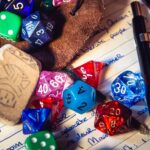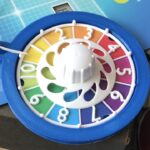Monsters of the Multiverse (2022) made a step in monster design that I loved. For monsters that cast spells, if the spell was relevant for a DM in combat, it was included directly in the stat block. Unfortunately, it seems like this design ethos was removed in the 2024 Monster Manual. This was most likely done for page count purposes, but making DMs refer to the Player’s Handbook for every monster with a spell is frustrating.
There is a lot of plate spinning that occurs when you are DMing, and having to switch between two different books to find a spell—out of hundreds—while also doing upcasting math on the fly during combat can get overwhelming.
To help alleviate this problem, I first wanted to analyze some of the new Monster Manual to see which spells are most commonly used and then categorize them. To do this, I went through all the stat blocks from A to F and noted the spells that could reasonably and commonly be used in combat by a creature. Below are the 19 spells with two or more uses.
| Spell | Uses |
|---|---|
| Invisibility | 6 |
| Greater Restoration | 4 |
| Plane Shift | 4 |
| Command | 4 |
| Fireball | 3 |
| Vitriolic Sphere | 3 |
| Scorching Ray | 3 |
| Lightning Bolt | 2 |
| Dimension Door | 2 |
| Mass Suggestion | 2 |
| Counterspell | 2 |
| Hold Person | 2 |
| Mage Armor | 2 |
| Shatter | 2 |
| Guiding Bolt | 2 |
| Ray of Sickness | 2 |
| Mind Spike | 2 |
| Lesser Restoration | 2 |
| Destructive Wave | 2 |
When looking at this list, I noticed some general categories these spells fall into. Some spells might cross between multiple categories, so this is by no means a perfect system. Below are the categories, along with a few examples:
- Single Target Damage – Scorching Ray, Guiding Bolt, Mind Spike
- Group Damage – Fireball, Vitriolic Sphere, Shatter
- Single Target Control – Hold Person, Command
- Group Control – Mass Suggestion, Gust of Wind
- Movement – Dimension Door, Misty Step
- Self-Protection – Mage Armor, Invisibility, Counterspell
There are, of course, outliers that might not fit these categories exactly, but most combat-relevant spells in the book slot into one of them.
For some, looking up spells during combat might not be an issue, but for those like me, I’ll propose the solution I’ve been using that has worked very well.
Replacing Spells with Sly Flourish’s Monster Features
| CR | DC | Attack Bonus | Damage per Round |
|---|---|---|---|
| 0 | 10 | +2 | 2 |
| 1/8 | 11 | +3 | 3 |
| 1/4 | 11 | +3 | 5 |
| 1/2 | 12 | +4 | 8 |
| 1 | 12 | +5 | 12 |
| 2 | 13 | +5 | 17 |
| 3 | 13 | +5 | 23 |
| 4 | 14 | +6 | 28 |
| 5 | 15 | +7 | 35 |
| 6 | 15 | +7 | 41 |
| 7 | 15 | +7 | 47 |
| 8 | 15 | +7 | 53 |
| 9 | 16 | +8 | 59 |
| 10 | 17 | +9 | 65 |
| 11 | 17 | +9 | 71 |
| 12 | 17 | +9 | 77 |
| 13 | 18 | +10 | 83 |
| 14 | 19 | +11 | 89 |
| 15 | 19 | +11 | 95 |
| 16 | 19 | +11 | 101 |
| 17 | 20 | +12 | 107 |
| 18 | 21 | +13 | 113 |
| 19 | 21 | +13 | 119 |
| 20 | 21 | +13 | 132 |
| 21 | 22 | +14 | 150 |
| 22 | 23 | +15 | 168 |
| 23 | 23 | +15 | 186 |
| 24 | 23 | +15 | 204 |
| 25 | 24 | +16 | 222 |
| 26 | 25 | +17 | 240 |
| 27 | 25 | +17 | 258 |
| 28 | 25 | +17 | 276 |
| 29 | 26 | +18 | 294 |
| 30 | 27 | +19 | 312 |
So to do this, it is very simple. You just match the creature’s CR to the table, and use those statistics along with the feature described below instead of the spell listed in the statblock. Use the DC column for the spell’s DC and the attack bonus if rolling to hit for the attack. Also players should be able to counterspell all of these abilities.
Monster Feature Replacements
Single Target Damage
Damaging Blast. This creature has one or more single-target ranged attacks using the attack bonus and damage calculated above, dealing damage of an appropriate type.
If the creature has multiple attacks, divide the damage accordingly.
Group Damage
Damaging Burst. As an action, this creature creates a burst of energy, magic, or some other effect in a 10-foot-radius sphere at a point within 120 feet. Each creature in the area must make a Dexterity, Constitution, or Wisdom saving throw (your choice). On a failure, they take damage equal to half the creature’s total damage per round. On a success, they take half damage.
Make sure you are dealing half of DRP!
Single Target Control
Controlling Blast. As an action, this creature targets a creature within 60 feet. The target must succeed on a saving throw (your choice) or suffer one of the following conditions: Frightened, Blinded, Restrained, or Poisoned. This lasts until the end of the target’s next turn.
This is my own addition—flavor it however you like!
Group Control
Controlling Burst. As an action, this creature creates a burst of energy, tentacles, or some other effect in a 10-foot-radius sphere at a point within 120 feet. Each creature in the area must make a saving throw (your choice). On a failure, they suffer one of the following conditions: Prone, Restrained, Poisoned, or Frightened. This lasts until the end of their next turn.
Use this sparingly! A couple of bad rolls could significantly increase combat difficulty.
Movement
Misty Step. As a bonus action, this creature teleports up to 30 feet to an unoccupied space it can see.
Great for jumping into the backline to scare the party!
Self-Protection
Damage Transference. When this creature takes damage, it can transfer half or all of that damage to a willing creature within 30 or 60 feet.
Perfect for boss monsters—maybe a minion jumps in front of an attack, or a cult leader magically channels harm into their followers.
Make it your own!
These 6 are what I personally use at my table often for monsters, but you should remix, remake, or copy to your hearts content. Also if interested in more improvised abilities like these check out Forge of Foes for more cool abilities like these. The Lazy GM’s 5e Monster Builder Resource Document is also a crazy good tool for your 5e game so check that out as well.
This work includes material taken from the Lazy GM’s 5e Monster Builder Resource Document written by Teos Abadía of Alphastream.org, Scott Fitzgerald Gray of Insaneangel.com, and Michael E. Shea of SlyFlourish.com, available under a Creative Commons Attribution 4.0 International License.








